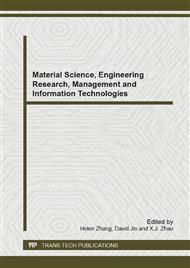[1]
G. Broustail et al. Comparison of regulated and non-regulated pollutants with iso-octane/butanol and iso-octane/ethanol blends in a port-fuel injection Spark-Ignition engine: Fuel Vol. 94(2011), pp.251-256.
DOI: 10.1016/j.fuel.2011.10.068
Google Scholar
[2]
Alasfour FN. Effect of using 30% iso-butanol-gasoline blend on hydrocarbon emissions from a spark-ignition engine: Energy Sources Vol. 17, No. 6. (1997), pp.537-549.
DOI: 10.1080/00908319950014704
Google Scholar
[3]
Yacoub Y, Bata R, Gautam M. The performance and emission characteristics of C1–C5 alcohol–gasoline blends with matched oxygen content in a single cylinder spark ignition engine: Proceedings of the Institution of Mechanical Engineers, Part A : Journal of Power and Energy, Vol. 212, No. 5. (1998).
DOI: 10.1243/0957650981536934
Google Scholar
[4]
Rice RW et al. Exhaust gas emissions of butanol, ethanol, and methanol gasoline blends: Journal of Engineering for Gas Turbines and Power Vol. 113(1991), p.377–81.
DOI: 10.1115/1.2906241
Google Scholar
[5]
Will F, Boretti A. A new method to warm up lubricating oil to improve the fuel efficiency during cold start: SAE technical paper 2011-01-0318.
DOI: 10.4271/2011-01-0318
Google Scholar
[6]
Will F. Fuel conservation and emission reduction through novel waste heat recovery for internal combustion engines: Fuel Vol. 102(2012), p.247–255.
DOI: 10.1016/j.fuel.2012.06.044
Google Scholar
[7]
Samhaber C, Wimmer A, Loibner E. Modeling of engine warm-up with integration of vehicle and engine cycle simulation. SAE technical paper 2001-01-1697.
DOI: 10.4271/2001-01-1697
Google Scholar


